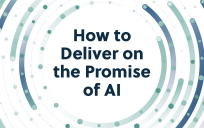In an age when critical infrastructure is becoming increasingly attractive to bad actors, state and local governments must strengthen their cybersecurity best practices. In 2021 alone, 58% of state and local agencies were affected by ransomware attacks.
Among the state systems crucial to the everyday lives of citizens, traffic management systems are one of the most important. Most weren’t designed to operate in today’s high-threat environment and are becoming more susceptible to cyber threats.
If an attack disrupts transportation, the outcome could be catastrophic on the roadway, disrupting the daily lives of citizens and even causing physical harm.
In response to the growing threat — as well as the need to optimize traffic conditions — transportation agencies are increasingly looking to adopt a traffic management infrastructure built around the concept of automation and AI-powered observability. Let’s look at the benefits:
Comprehensive Visibility of the Complete Network
A major challenge facing departments of transportation (DOTs) is that they lack visibility into the overall network’s performance as well as the security posture of the cameras, signs, and other sensors in a region.
As a result, IT teams are flying blind and finding problems by chance, which is a risky and inefficient way to manage a complex infrastructure. DOT workers can spend hours combing the network to check the security and operational status of sensors and systems. As well as being a heavy lift for workers, any delay in discovering an insecure device might allow hackers to exploit it. The negative effects of this could be life-threatening for motorists and pedestrians in the region.
Observability can mitigate these challenges by providing an end-to-end single view of field devices and the network infrastructure supporting them — whether on-premises, hybrid, or multi-cloud. Through observability, DOT workers can better understand the complexities within ITS environments, discover dependencies between applications, predict where security incidents or network performance issues may occur, and take the first steps toward developing network-wide capacity and security improvement plans.
Reducing the Time to Remediate Security Issues
DOTs can’t completely protect themselves from every cyberattack or network issue, but they must do everything they can to keep transportation systems running smoothly and safely. A key challenge is that personnel can spend large amounts of time jumping between different security and network performance monitoring tools. These disparate monitoring methods can generate a flood of alerts, making it hard to prioritize remediation efforts and even leading personnel down the wrong path.
When lives are at stake, DOTs can’t take chances.
However, with observability, it becomes much easier to proactively assess an ITS’ state. Workers can collect device and network health information, detect vulnerabilities, and receive real-time incident alerts in a centralized dashboard view so they can react quickly and proactively to improve infrastructure performance, reliability, and security. Automation takes this process a step further by allowing the network to self-remediate security and performance issues without requiring human intervention.
Improved Awareness, Improved Accountability, and Improved Safety
Through observability and automation, DOT teams can achieve granular-level insight into the cybersecurity health and performance of every roadside device and its underlying network.
Importantly, they also introduce a culture of efficiency and continuous improvement, ensuring a commitment to roads that are safe for drivers and pedestrians — today and tomorrow.
Brandon Shopp currently serves as the group vice president of product strategy at SolarWinds. He has a proven success record in product delivery and revenue growth, with a wide variety of software product, business model, M&A, and go-to-market strategies experience. Shopp previously served as VP of product management for network management, systems management, as well as senior director of product management for systems and application management when he joined in 2018. Prior to SolarWinds, Shopp was the vice president of product management at AlienVault and the senior director of products at Embarcadero Technologies. Shopp holds a B.B.A. from Texas A&M University.





Leave a Reply
You must be logged in to post a comment.